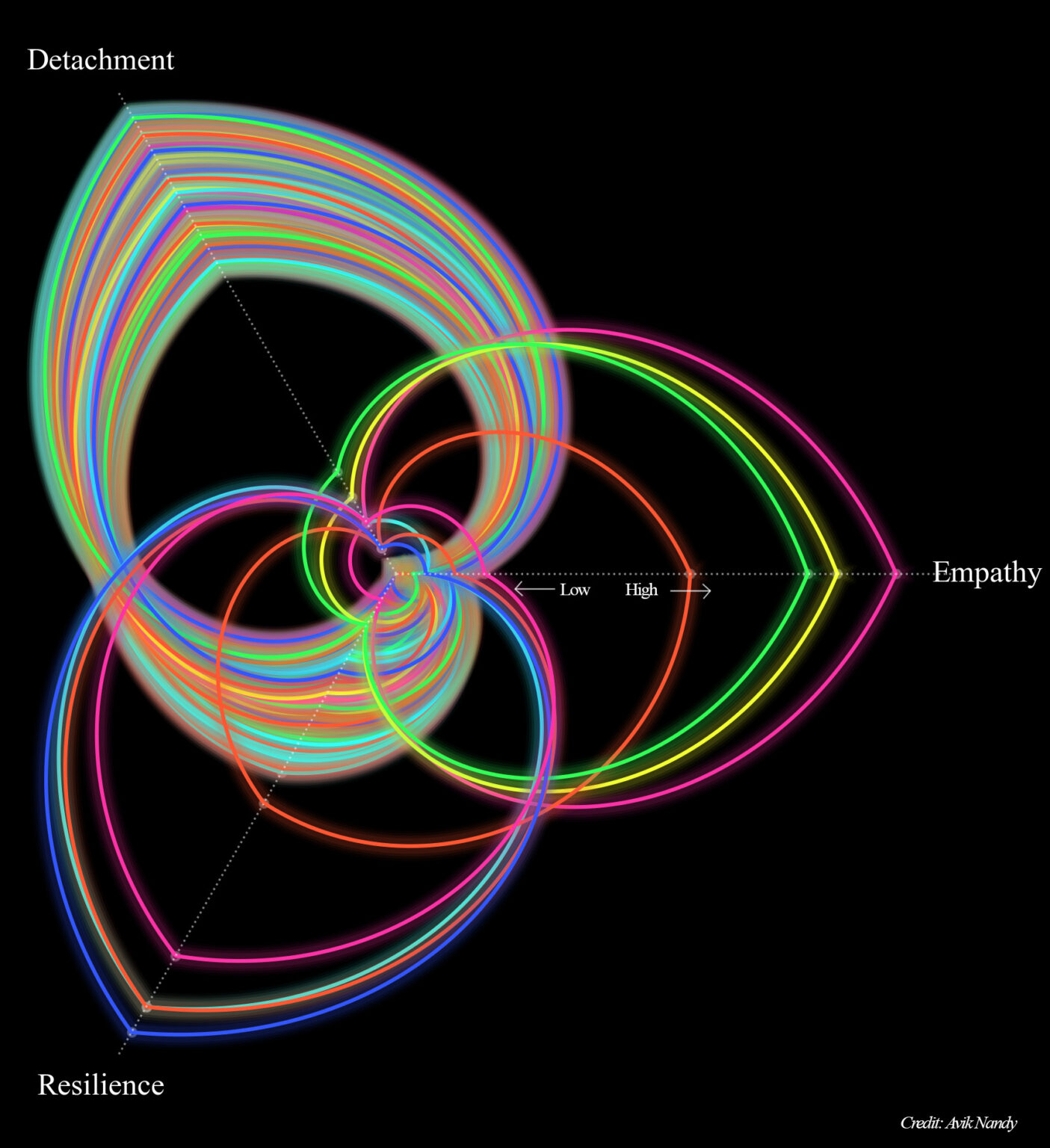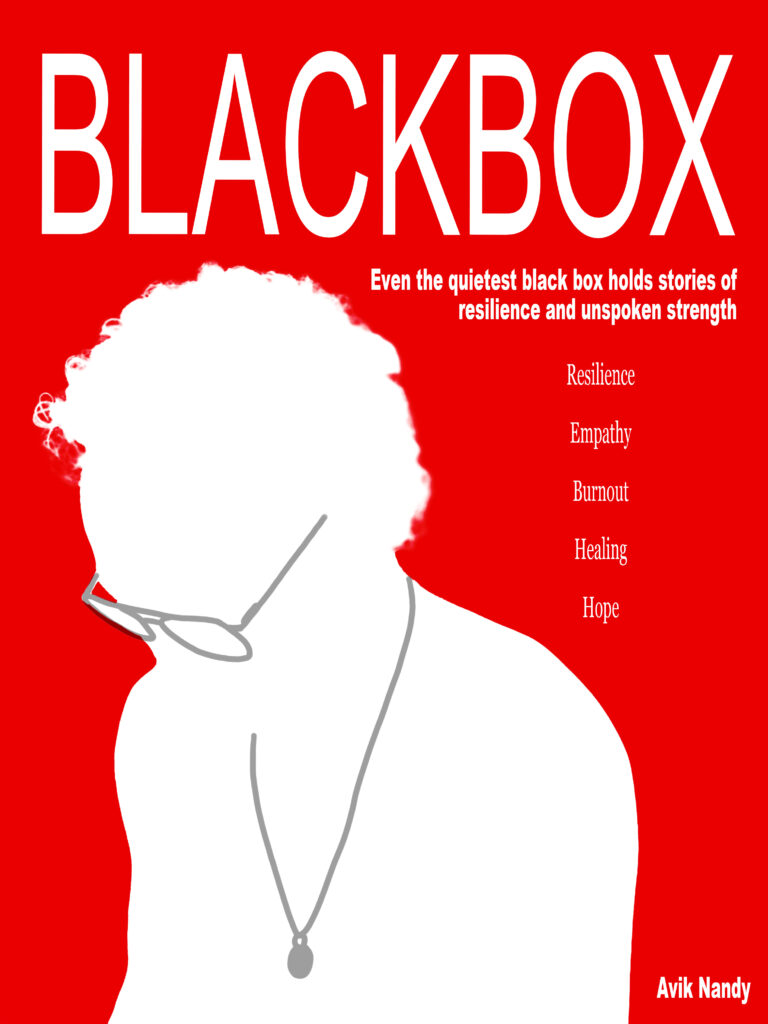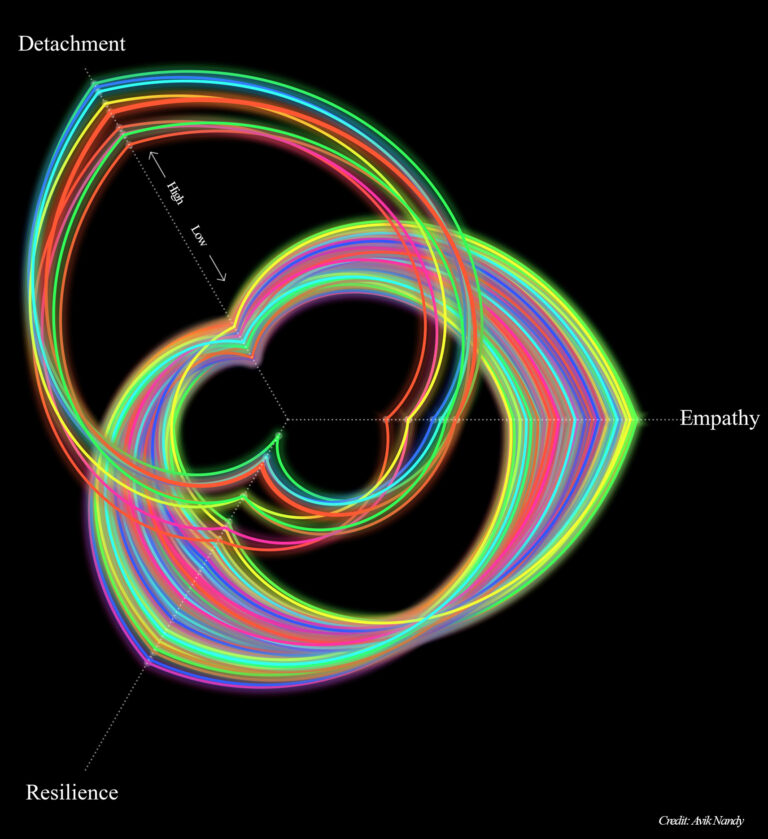The Push and Pull
Empathy and Detachment: where resilience stands?
January 2025
My desperate desire for a proper break is directly proportional to my determination to make this graph.
1295 days into my PhD (January 26, 2025), and this isn’t just data — it’s a story. A story of empathy, detachment, and resilience. With countless data points, this graph reflects the ebb and flow of connection, withdrawal, and balance. Maybe I need a break, but honestly, this is what I love about research, turning emotions into something meaningful.

Figure 101: Neon radar plot depicting the balance between Empathy, Detachment, and Resilience. The plot illustrates the dominance of empathy in fostering connection, the gradual rise of detachment as empathy fades, and the central role of resilience in maintaining balance. The glowing curves symbolize the transitions between these states, highlighting the dynamic nature of human emotions and the hope for renewal through resilience.
Finding Balance
Human emotions are never static. They ebb and flow, rise and fall, shaped by the forces of empathy, detachment, and resilience. These elements, working in tandem, influence how we connect to others, how we protect ourselves, and how we endure life’s complexities. This radar plot serves as a metaphor, visualizing the transitions between these states and reflecting the beauty and struggle of emotional balance.
When empathy is strong, it illuminates everything it touches. Empathy connects us deeply to others, fostering understanding, kindness, and meaningful relationships. In these moments, detachment fades into the background, muted by the warmth of connection. The curves clustering near the empathy axis symbolize this triumph, moments when we allow ourselves to care and feel fully, unguarded and open.
But empathy, like all things, is not infinite. Over time, as its intensity softens, detachment begins to surface. Detachment is not inherently negative; it offers space, protection, and distance when emotions become overwhelming. Yet, when empathy fades too far, detachment can grow too strong, pulling us into isolation. The curves near the detachment axis reflect this quieter, more withdrawn state—a time when disconnection takes the place of connection. It is a poignant reminder of the fragility of emotional openness.
During this tug between empathy and detachment stands resilience, a quiet but unwavering force. Resilience is the strength that keeps us grounded, helping us navigate extremes. It is the voice that whispers, “You can endure this”. In the central region of the plot, resilience acts as a bridge, holding empathy and detachment in balance. There are times when detachment grows too heavy and resilience falters, but it always finds a way to rebuild itself. This ability to adapt and recover makes resilience vital.
And so, the plot tells a story of hope. While empathy may fade and detachment may take over for a time, resilience ensures that no state is permanent. Detachment, though it offers temporary protection, can shift when there is a willingness to reattach with surrounding emotions. Resilience becomes the driver, pushing us back toward the empathy spectrum and softening hypervigilant detachment. By grounding us, resilience helps bring balance, quieting the noise of disconnection and allowing the warmth of connection to reemerge.
This graph is not just a visualization of data; it is a testament to the human spirit, and, in this case, my own endurance in navigating these aspects. It illustrates that even when emotions shift and balance feels out of reach, there is always a way forward. Empathy can rise anew, resilience can grow stronger, and detachment, though necessary at times, need not define us. Together, these forces tell a story of strength, growth, and renewal.
Feedback loop
From Connection to Disconnection—and finding it again
This graph reflects the initial stage and perhaps the “ideal” state, where empathy and resilience were dominant, and detachment remained low. It portrays a time of strong emotional connection and balance. Over time, however, detachment began to rise, eventually overtaking empathy and shifting the balance toward withdrawal and isolation. It also serves as a reminder of how detachment can pull you further away as empathy fades. Be resilient to the circumstances, allow yourself time to process, and work toward shifting back to higher empathy.
Read more?
If you’re interested in exploring more about empathy, burnout, and resilience, grounded in both scientific research and personal experience — feel free to send me a DM here!

Blackbox explores the quiet resilience of those who give endlessly, carrying the weight of unspoken emotions and untold stories. It reflects on empathy burnout, healing, and the hidden strength in vulnerability. Discover what the black box holds—if you’re ready to listen.

Words of the Reader
Thanks for the read and being open! A lot to think about.
Grateful for Your Time
Thank you for being here and supporting this journey. May you carry the inspiration, hope, and stories shared here with you always.
Leave a comment
Let us know what you think. Can you relate yourself to this story?
All images, drawings, research, stories, and content are exclusively generated by the authors and are protected by copyright. Unauthorized reproduction, copying, printing, publishing, or sale of any material is strictly prohibited without prior written approval from the copyright holders. Any infringement will be subject to legal action. Thank you for respecting the intellectual property rights of the creators and authors involved in the production of this content.
Acknowledgement of Traditional Custodians
We pay our respects to the Aboriginal and Torres Strait Islander ancestors of this land, their spirits and their legacy. The foundations laid by these ancestors gives strength, inspiration and courage to current and future generations, both First Nations and non-First Nations peoples, towards creating a better Queensland.
